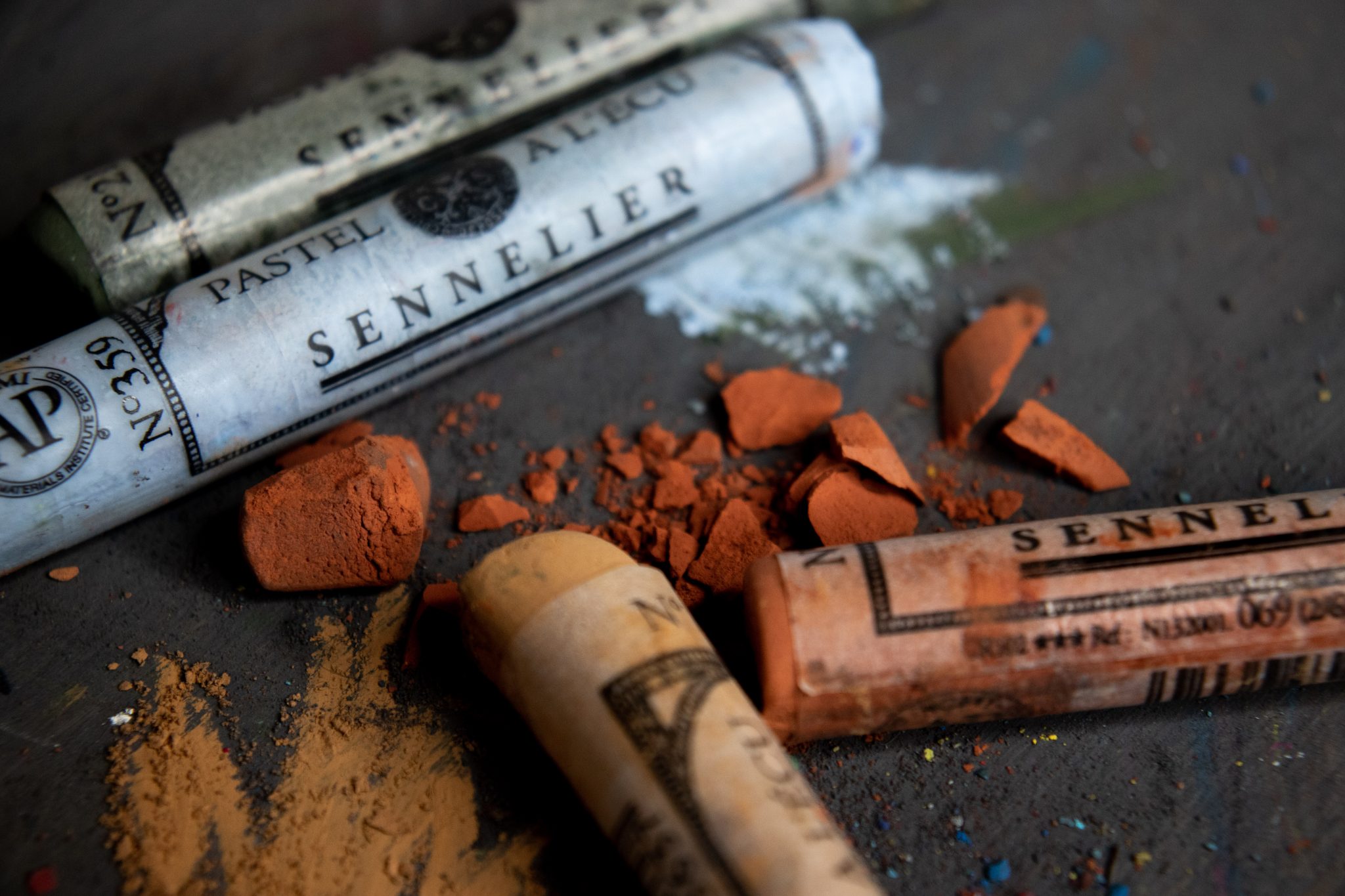Starting with Pastels
August 11, 2021Pastels
Many budding artists choose to work in pastels because they are easy to use and the colors produced are rich and sensual. To create a work in pastels you only need paper, fixative and the pastels themselves. There’s no premixing on a palette, no need to add mediums and pastels can be applied to almost any surface. Though pastels are similar to chalk, they are actually a powdered pigment bound together with a gum or resin and shaped into sticks or pencils. Several types of pastels are available in both student and artist grade. Student grade pastels are economical and ideal for experimentation. Artist grade pastels use finer pigments making them more expensive, but their strong color quality and smooth consistency are the reward. Although seemingly an intimidating aisle in the art store a few rules of thumb can unveil the pastel mystique.

Pastel Types
Soft/Chalk Pastels
These are the original and most popular pastel. They glide easily onto a paper’s surface with the ability to produce many different types of strokes. This pastel has the widest range of colors available. However, soft pastels can get dirty and dusted from the surrounding chalks. Keep them clean by wiping them with a tissue as you work or laying them in a bowl of rice which will rub away the dirty surface powder. Get started in soft pastels with great brands like Sennelier, Rembrandt, and many more.
Hard Pastels
Hard pastels contain additional binder making them durable and less crumbly. They are available in both stick and pencil form which when sharpened to a point make them ideal for use in the drawing portion of your painting. They’re also used for detail work because they have the ability to create sharp, hard edges. Hard pastels may be used alone or in conjunction with other types of pastels. Try Prismacolor NuPastels if you’re wanting to try hard pastels.
Water-Soluble Pastels
These pastels have a chalky consistency and are used dry or wet. Available in pencil and stick form, once applied to paper they can be thinned with a wet brush. Many soft and hard chalk pastels are also water-soluble, such as Caran d’Ache Neo II and Talens Art Creation Oil Pastels.
Oil Pastels
Oil pastels are cream-based stick pastels. These colors can be used direct, built up in layers, blended with a cloth or even diluted with mineral spirits to create rich, transparent washes. They can also be used in combination with other dry or wet media to produce myriad effects. We have an excellent selection of oil pastels from Sennelier, Pentel, and more!




Supports
Pastels can be applied to many different types of paper. The finished look of a pastel painting directly relates to the texture of the paper used because the pigment is picked up and grabbed by the paper’s “tooth.” Because you mix pastel colors on the paper’s surface as opposed to a palette, the application of color is important as the paper will only accept a certain amount of chalk. One way to ensure success is to apply your colors in layers. Begin by applying a coat in one shade, then add another on top so the bottom layer shows through. At some point the paper gets full and will accept no more color. To avoid this, a thicker paper is better. Watercolor paper, printmaking paper or any type that is thick with some texture is good. There are also specific types of pastel paper designed to absorb layers of chalk. You can buy these in single sheets or in pastel pads. Colored papers are interesting and useful because they can help in adjusting your eye to the correct tonal range of what you are painting.
The Ideal Pastel Workstation
Using an easel that allows the top edge of the painting to tilt toward you is best for pastel work. The tilt ensures that, rather than sift down onto the picture, falling pastel dust will drop to the floor or the easel’s tray. Try making a trough out of moistened newspaper for easy clean-up. For an easel that works well for pastel artists, check out the BEST Deluxe Lobo Easel, the Big Sky Easel, or the BEST Classic Dulce Easel, or the smaller Cascadia Deluxe Table Easel
Blending
Depending on the finished look you desire, there are a number of blending tools to choose from for use with pastels. Stumps are sticks made of compressed paper which have double pointed ends and are easily sharpened. Tortillons are only pointed at one end and are made of tightly wound soft grey paper. Chamois cloths are fine quality skins also used for blending and shading pastels.
Fixatives
Fixatives can be very helpful for working in pastels. Workable fixatives are used during the painting process when the paper surface gets saturated with pigment and can no longer pick up any more. A workable fixative will layer the surface and create a grained clear layer on top of the surface allowing you to resume painting. A finishing fixative is used to prevent smudges and create a protective, fade resistant clear coat on the surface of the finished artwork.
